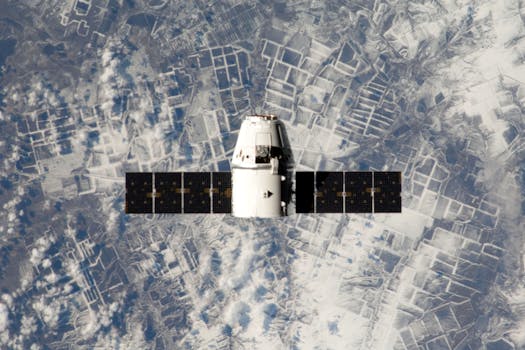The Future of Satellites: Revolutionizing Global Connectivity

The Future of Satellites: Revolutionizing Global Connectivity
The future of satellites is poised to revolutionize global connectivity, enabling faster and more reliable communication services. With advancements in space technology, satellites are becoming increasingly important for telecommunications, navigation, and remote sensing. The focus keyword Future of satellites is becoming a hot topic in the tech industry, as companies and governments invest heavily in satellite technology to improve global connectivity.
Advancements in Satellite Technology
Recent years have seen significant advancements in satellite technology, with the development of smaller, more efficient, and cost-effective satellites. These advancements have enabled the launch of large constellations of satellites, such as OneWeb and Starlink, which aim to provide global internet coverage. The use of advanced materials and manufacturing techniques has also improved the performance and lifespan of satellites, reducing the need for frequent replacements and improving overall efficiency.
The integration of artificial intelligence (AI) and machine learning (ML) in satellite technology is also becoming increasingly important. AI and ML can be used to improve satellite operations, such as predicting and preventing failures, optimizing communication networks, and enhancing data analysis. This can lead to improved performance, reduced costs, and enhanced decision-making capabilities.
Applications of Satellites in Telecommunications
Satellites play a critical role in telecommunications, providing connectivity to remote and underserved areas where traditional communication infrastructure is lacking. Satellites can be used to provide internet access, voice services, and data transmission, enabling communication between individuals, businesses, and governments. The use of satellites in telecommunications also enables the provision of emergency services, such as search and rescue operations, and disaster response.
The growth of the Internet of Things (IoT) is also driving the demand for satellite-based connectivity. Satellites can provide low-cost, low-power connectivity for IoT devices, enabling the transmission of data from remote sensors and devices. This can be used in a variety of applications, such as agriculture, transportation, and environmental monitoring.
Challenges and Opportunities in the Satellite Industry
Despite the many advancements and opportunities in the satellite industry, there are also significant challenges to be addressed. One of the major challenges is the issue of space debris, which poses a risk to the safety and sustainability of satellite operations. The increasing number of satellites in orbit also raises concerns about congestion and interference, which can impact the performance and reliability of satellite-based services.
Another challenge is the need for regulatory frameworks to govern the use of satellites and ensure that they are used in a safe and responsible manner. This includes the development of standards for satellite design, launch, and operation, as well as the establishment of rules for the use of satellite-based services.
Despite these challenges, the future of satellites looks promising, with many opportunities for growth and innovation. The development of new technologies, such as quantum satellites and satellite-based solar power, is expected to drive further advancements in the industry. The increasing demand for satellite-based services, particularly in the areas of telecommunications and navigation, is also expected to drive growth and investment in the industry.


